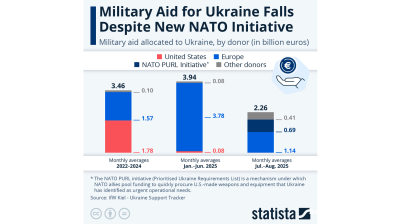Sustained remittance inflows, higher wages and greater international tourism interest have this year been the main contributors to continued growth in Central Asia, according to the latest edition of the European Bank for Reconstruction and Development’s (EBRD) Regional Economic Prospects report.
Though, Central Asia's economic growth is expected by the EBRD to moderate to 5.1% this year from 5.7% in 2023 to 5.1% this year, largely because of a slowdown in mining operations in Kazakhstan and Uzbekistan, the development bank anticipates that it will rise to 5.9% in 2025.
The assessment also notes the ongoing commitment of the Central Asian countries to develop their transport, logistics and energy infrastructure, something that “has made positive contributions to the region’s buoyant GDP figures”.
Among the region’s countries, the Kyrgyz Republic and Tajikistan are singled out as demonstrating strong GDP growth, with the former set to come within a percentage point of double-digit growth.
As regards Central Asia’s largest economy, Kazakhstan, the trade, transport, warehousing, services and information technology sectors were the main growth drivers in the first half of the year, says the report.
The EBRD forecasts the country’s economy will grow by 4.0% in 2024, with upside from public spending to restore flood-affected infrastructure and housing.
Also, according to the Regional Economic Prospects report, in 2025, Kazakhstan’s real GDP is likely to grow by 5.5% amid the planned expansion of the Tengiz oil field.

Looking at Central Asia’s second largest economy and most populous country, Uzbekistan, there is a fuelling of growth by expanded remittances and tourist arrivals, along with a strengthening of the services and industrial production sectors, the report notes.
The EBRD expects Uzbekistan’s economy to expand by 6.0% in both 2024 and 2025 on continued market-oriented reforms and infrastructure investments. “However, an energy deficit, which has already led to an increase in mineral-fuel imports, could pose a challenge and limit growth opportunities,” the bank said.
Kyrgyzstan, meanwhile, is becoming a growing tourist destination, said the EBRD, adding: “This is driving catering-sector turnover and boosting tourist transportation revenues. Both remittances and real wages have remained elevated, helping retail and wholesale trade to grow.
The report forecasts Kyrgyz GDP will reach as high as 9% in 2024 before moderating slightly to 7% in 2025. “Its growth potential stems from the expansion of tourism, investment in infrastructure, and silver and gold exports, but secondary sanctions related to intermediated trade remain a threat,” the EBRD said.
In Tajikistan, hikes in public sector salaries, pensions and minimum wages drove domestic demand in the first half of the year, providing a boost to the retail and wholesale trade sectors, the report observes.
“The resumption of precious and semi-precious metal exports, increased public infrastructure spending and fixed capital investment were cited as major growth factors,” said the EBRD.
Looking at Mongolia, due to the extreme “dzud” weather conditions endured this year, there have been recorded livestock losses totalling 8.1mn heads, with the agricultural sector contracting in the first half of 2024, constraining economic growth, the report says.
“At the same time, an increased number of foreign tourists drove the expansion of the hospitality, catering, food and transportation sectors. Mongolia’s growth in the first six months of the year was supported by a strong performance in the mining, quarrying and manufacturing sectors,” it adds.
The EBRD expects Mongolian GDP to reach 5% in 2024 versus 7% last year and to expand by 8% in 2025.
“Possible stronger-than-expected growth in China could drive external demand, although the growth outlook also remains highly vulnerable to fluctuations in commodity prices and energy supply,” it concludes.
Data

India’s retail payment revolution
India’s payments landscape has reached a pivotal stage, with digital transactions now accounting for 99.8% of all retail payments.

Military aid for Ukraine falls despite new Nato PURL initiative – Statista
The Kiel Institute for the World Economy found that military aid to Ukraine dropped sharply in July and August compared to previous months, despite the implementation of the Nato PURL initiative.

IMF cuts Russia’s 2025 growth forecast to 0.6%, leaves Ukraine's unchanged at 2%
The International Monetary Fund has lowered its forecast for Russia’s economic growth in 2025 to just 0.6%, marking the second-steepest downgrade among major economies, even as it raised its global outlook.

Russia's PMI indices plummet as economy cools
Russia’s private sector entered deeper contraction in September, as both services and manufacturing activity declined, according to the latest PMI data published by S&P Global.




